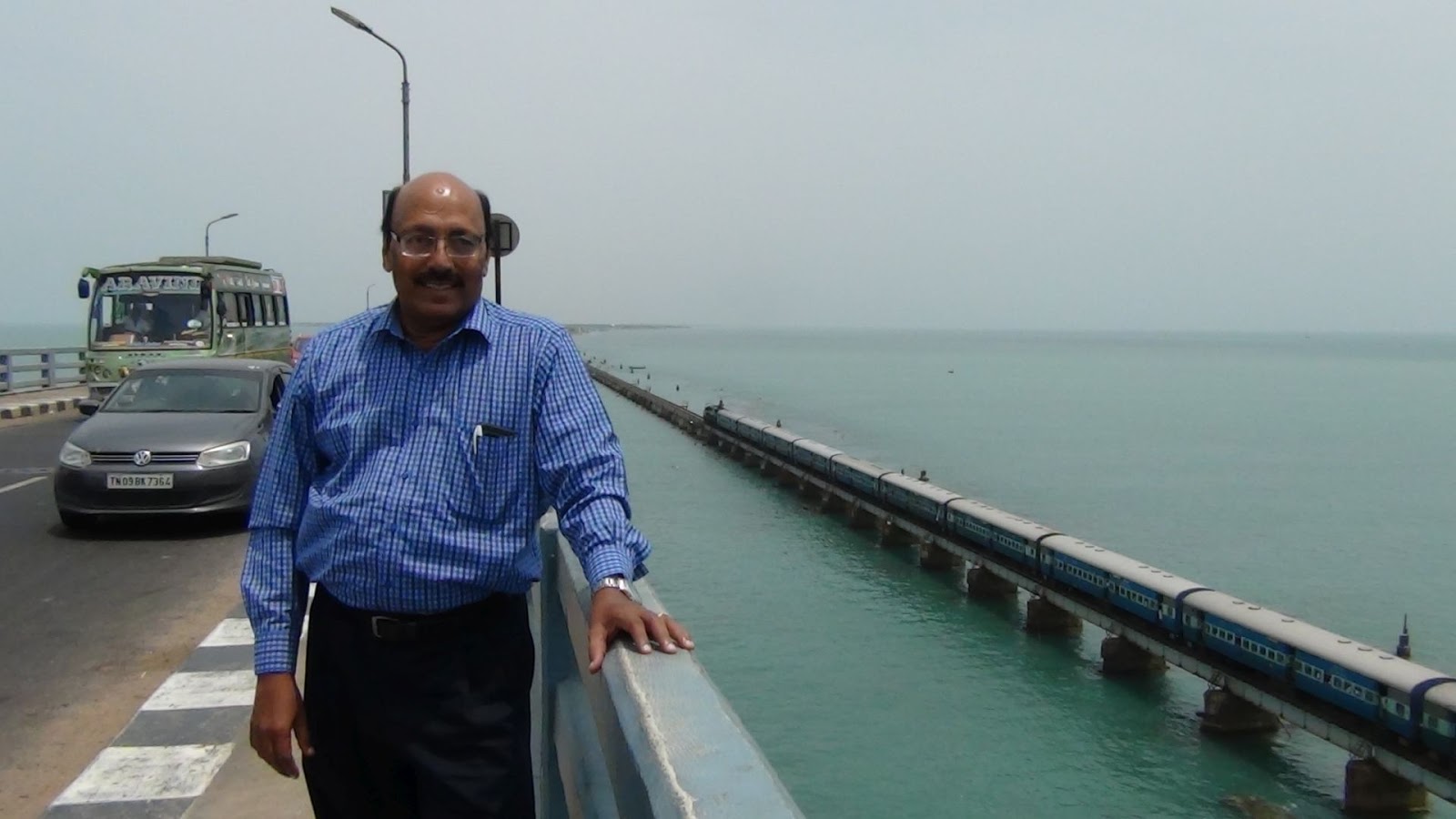PAMBAN BRIDGE VIDEO:
We were at the awesome Pamban Bridge recently. The attached photographs and video are of us at this extraordinary bridge. I hope these visuals and my article will convey to you how marvelous and mighty this historic bridge is!
Pamban Bridge is a railway bridge over the Sea which connects the town of Rameswaram on Pamban Island to Mainland India. It was an engineering marvel that opened to the world on 24th February 1914 and even today after 104 years it continues to fascinate us. It is India’s first Sea Bridge and the longest in India until 2010 when the Bandra-Worli Sea Link was opened in 2010. The bridge is located 12.5 metres above sea level and is 2,065 m long. The bridge consists of 143 piers and has a double-leaf bascule section with a Scherzer rolling type lift span that can be raised to let ships pass. Each half of the lifting span weighs 415 tonnes. The two leaves of the bridge are opened manually using levers.
The need for rail connectivity between the Mainland and the Island was felt in the late 1870s, when the East India Company, expanding its trade, decided to establish a rail link between Dhanushkodi on Pamban Island and Colombo in Ceylon (Sri Lanka). On completion, the railway bridge carried Metre-gauge trains connecting Mandapam on Mainland India to Pamban on the Island and from there the railway line bifurcated, one line towards Rameswaram about 10.06 km up and another branch line of 24 km terminating at Dhanushkodi a point closest to the Sea separating Sri Lanka.
Trains ran up to Dhanushkodi until 1964 when the Metre-gauge branch line from Pamban to Dhanushkodi was destroyed during the 1964 Dhanushkodi cyclone…on 23rd December 1964, an estimated 7.6 m storm surge struck the island, destroying the entire town, the population, the houses, the railway station and it also overturned the Pamban-Dhanushkodi passenger train killing all 150 passengers on board. However the Pamban Bridge required very little repairs and within few days trains from Madras Egmore, Madurai and Trichy resumed.
The Pamban Bridge is located in the world's second most corrosive environment after Florida, making its maintenance a challenging job. The location is also a cyclone-prone high wind velocity zone. Despite such environment, this Bridge is functioning well even after 104 years! With of course timely repairs and good maintenance.
Under the all India program of Metre-gauge tracks conversion to Broad-gauge the Indian Railways upgraded the Pamban bridge to carry Broad-gauge trains and the work was completed on 12th August 2007.
In 1988, a Road Bridge was also constructed parallel to the Rail Bridge as you can see in the attached pictures. This Road Bridge is also known as Annai Indira Gandhi Road Bridge. The Pamban Road Bridge connects the National Highway (NH 49) with the Pamban / Rameswaram Island. It stands on the Palk Strait and between the shores of Mandapam on the Mainland and Pamban, one of the fishermen towns in Rameswaram Island. It was inaugurated by former Indian Prime Minister Rajiv Gandhi on 2nd October 1988. This 2.345 km long Bridge took close to 14 years to be completed while the Rail Bridge took a little over 3 years, 104 years ago! We traveled by road from Madurai and on this bridge to visit Rameswaram, the holy place full of Temples and Theerthas existing from the time of Lord Rama, Sita Devi, Lakshmana Swamy, Lord Hanuman and many prominent personalities of that era lived and walked all over this Island. Most of the attached photographs and videos are shot from this Road Bridge.




















































